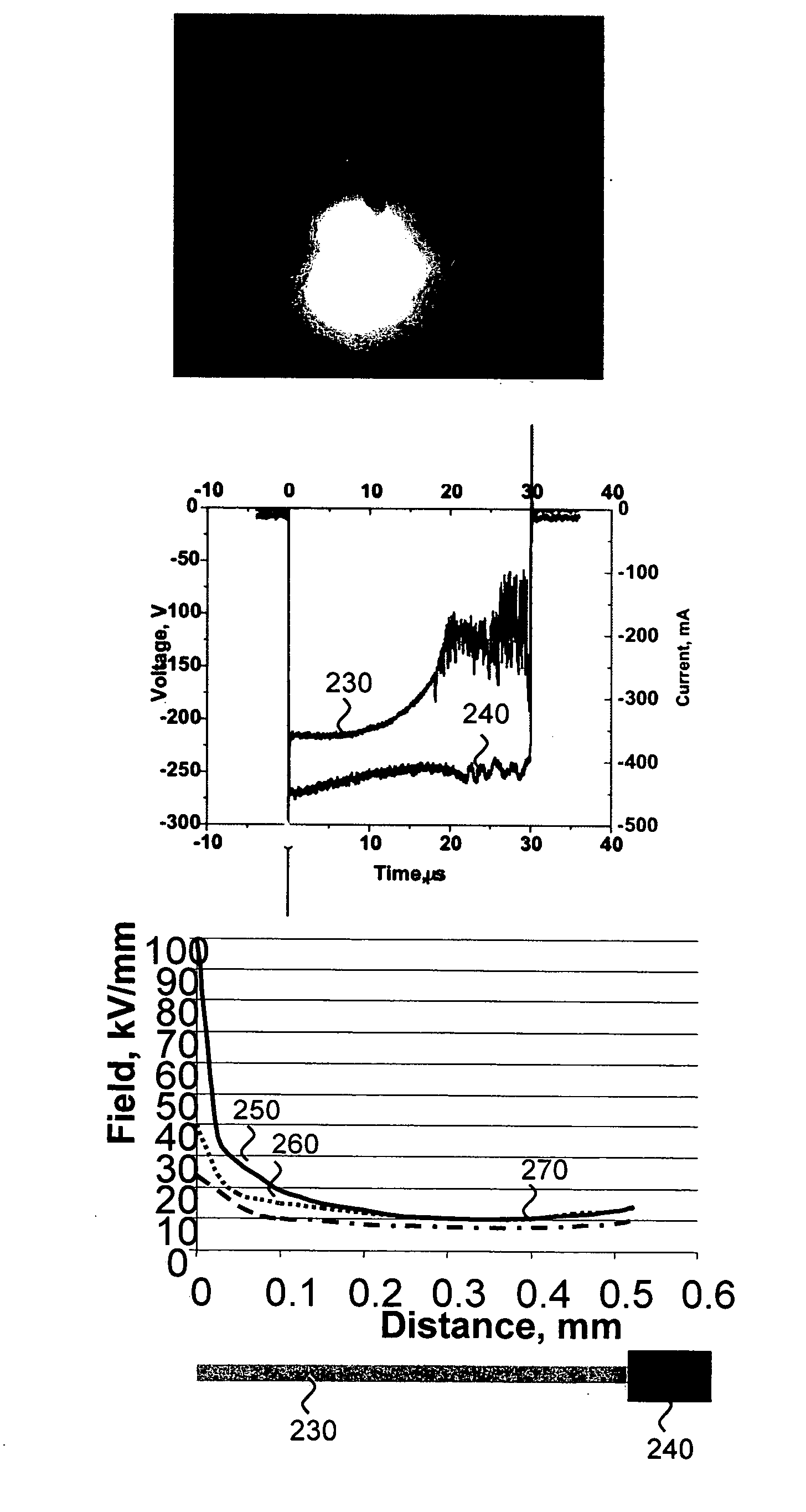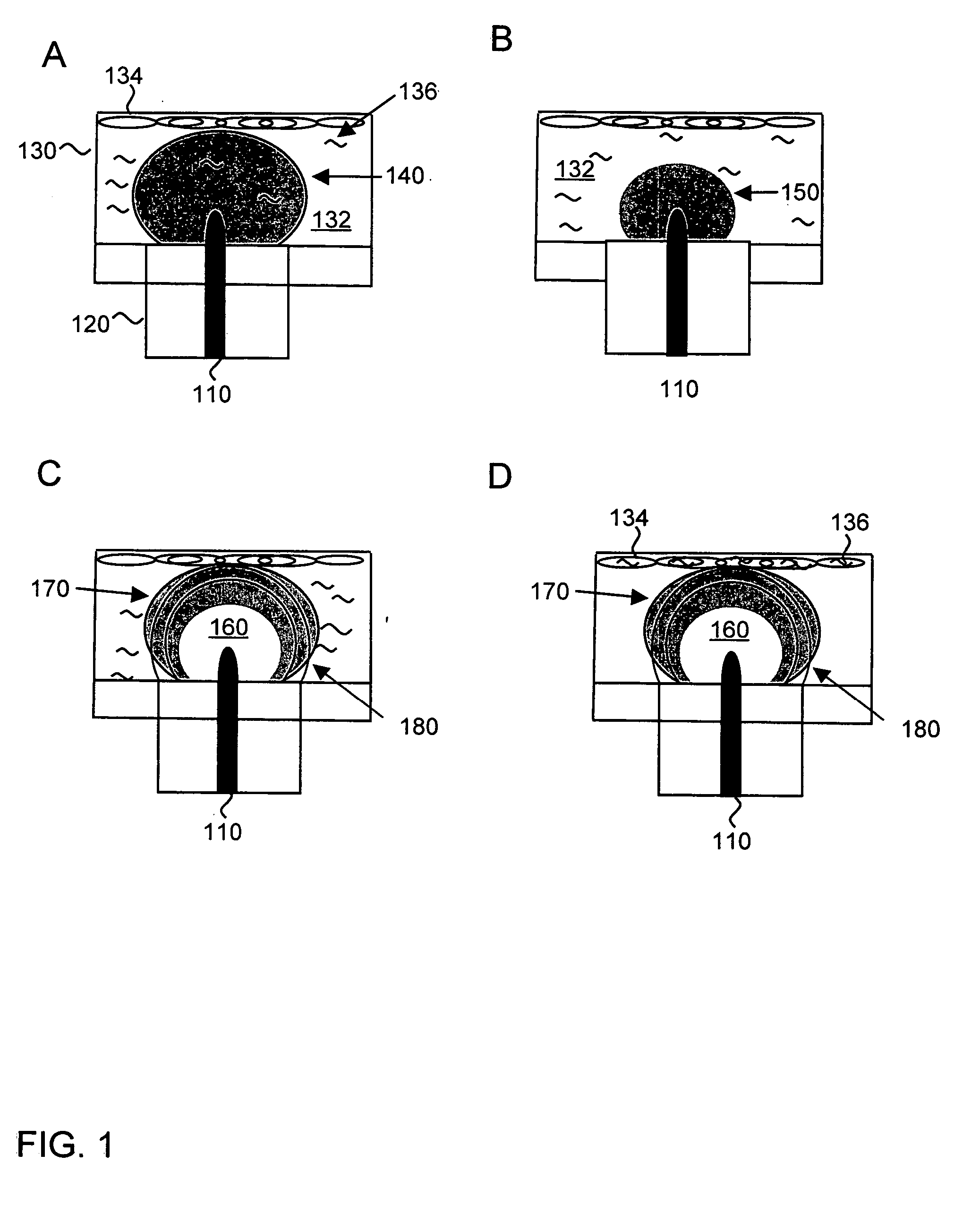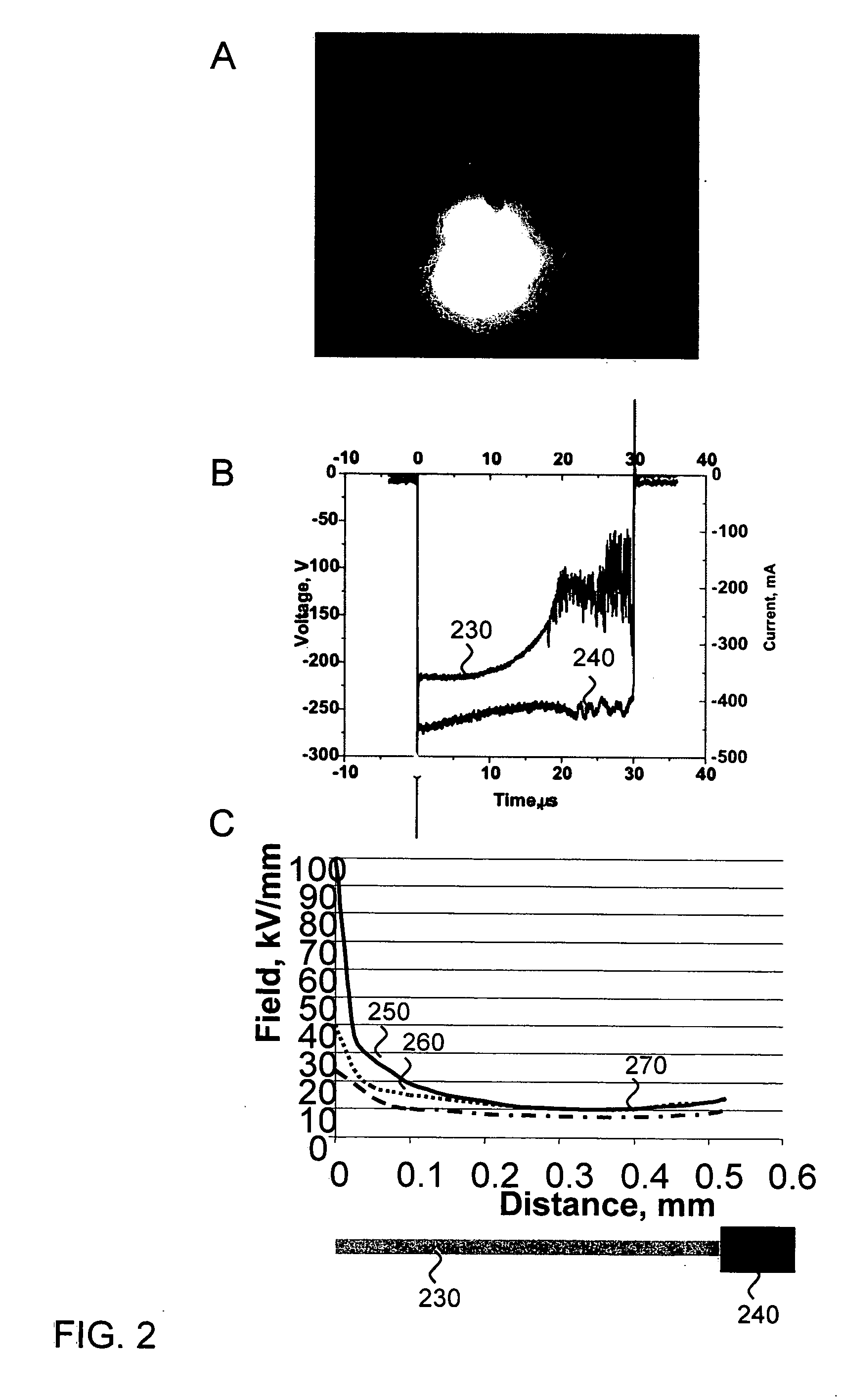Ocular gene therapy using avalanche-mediated transfection
a technology of ocular gene therapy and avalanche, applied in the field of medicine, can solve the problems of short half-lives of proteins and aptamers, need intravitreal administration, and potential long-term gene therapy approaches, and achieve the effect of prolonging the therapy time, and prolonging the treatment tim
- Summary
- Abstract
- Description
- Claims
- Application Information
AI Technical Summary
Benefits of technology
Problems solved by technology
Method used
Image
Examples
example 1
Construction of a Plasmid for Transfection
[0053] The plasmid shown in FIG. 7 contains the sequence SEQ ID NO: 1. SEQ ID NO: 1 includes a cytomegalovirus (CMV) promoter (1-589 bp), a nucleotide sequence encoding for pigment epithelium-derived factor (PEDF; 590-2131 bp), an internal ribosome entry site (IRES) coding sequence (b2151-2735 bp), and a nucleotide sequence encoding for enhanced green fluorescent protein (eGFP; bp 2739-3455), an SV40 polyA sequence (3612-3662 bp), a phi C31 attB site (3952-4245 bp), a bacterial kan promoter (4541-4576 bp), SV40 origin and promoter enhancer (4653-4955 bp), neo for G418 selection (5004-5798 bp), and an pUC origin (6383-7026 bp).
[0054] To make this plasmid, begin with vector pIRES-EGFP, commercially available from Clontech. Cut the vector with the restriction enzyme BsaI (New England Biolabs) to linearize the vector, make blunt ends (e.g., using DNA Polymerase I, Large (Klenow) Fragment, New England Biolabs), and treat with a phosphatase to r...
example 2
Transfection of Conjunctival Tissue with Luciferase Gene
[0056] A study was conducted in support of the method described herein, where a luciferase marker gene was transfected into conjunctiva tissue. Conjunctival tissue was explanted from adult New Zealand White rabbits and placed in tissue culture dishes. All samples were placed in 1 mL phosphate buffered saline solution with 100 micrograms of plasmid DNA encoding the luciferase gene under a CMV promoter. All samples were cultured in Dulbecco's Modified Eagle Medium (DMEM) plus 10% serum and antibiotic / antimicotic for 24 hours after transfection. Samples were then treated with luciferin substrate (150 micrograms luciferin per ml medium) and imaged using the IVIS-200 system (Xenogen Corp.).
[0057] The conjunctival tissue, which contained conjunctival fibroblasts, was transfected using electron-avalanche mediated transfection with a luciferase marker gene. A control sample of tissue was contacted with the luciferase gene in the abse...
example 3
Comparison of Electron Avalanche Versus Traditional Electroporation in DNA Transfer
[0058] Because electroporation protocols vary for different tissues, experiments were first conducted to determine the optimal protocol for transfecting CAM from a developing chicken egg using traditional electroporation. CAM is a live, readily available, and inexpensive tissue. Its epithelial layer is uniform and has high resistance, making it a good model for epithelial cell layers, such as retinal pigment epithelium. In this model system, 100 μg of pNBL2 plasmid DNA encoding the luciferase gene was pipetted onto the CAM, and pulses were applied. Specifically, a 250-μs, 150-V phase, followed by a 5-ms, 5-V phase in the same polarity was applied. Optimal results were achieved with 50 cycles applied at 1 Hz. The tissue was then cultured and assayed for luciferase bioluminescence. Luciferase expression using this method was about 104 photons / s.
[0059] For electron-avalanche transfection, a 50-μm wire ...
PUM
| Property | Measurement | Unit |
|---|---|---|
| electric field | aaaaa | aaaaa |
| diameter | aaaaa | aaaaa |
| diameter | aaaaa | aaaaa |
Abstract
Description
Claims
Application Information
 Login to View More
Login to View More - R&D
- Intellectual Property
- Life Sciences
- Materials
- Tech Scout
- Unparalleled Data Quality
- Higher Quality Content
- 60% Fewer Hallucinations
Browse by: Latest US Patents, China's latest patents, Technical Efficacy Thesaurus, Application Domain, Technology Topic, Popular Technical Reports.
© 2025 PatSnap. All rights reserved.Legal|Privacy policy|Modern Slavery Act Transparency Statement|Sitemap|About US| Contact US: help@patsnap.com



